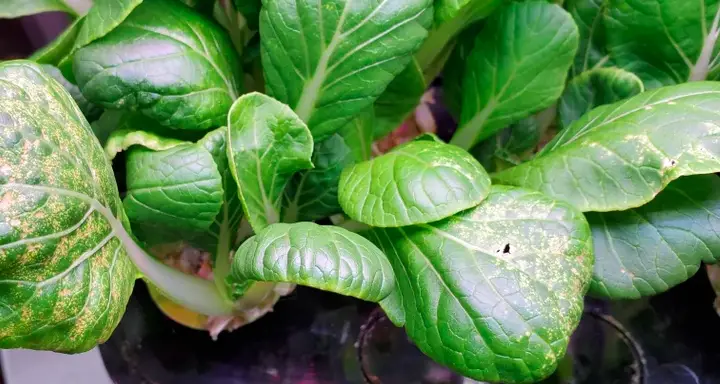Bok choy, also known as Chinese cabbage, is a tasty vegetable that adds crunch and flavor to many Asian-inspired dishes. However, this cabbage relative is prone to attack by several insect pests that can riddle the leaves with unsightly holes. Don’t despair – those holes don’t have to ruin your planned stir-fry or soup. With some detective work and integrated pest management techniques, you can get to the root of what’s munching your bok choy and take action to control the damage.
Common Culprits Behind Bok Choy Leaf Holes
Here are some of the usual suspects when it comes to pests that chew holes in bok choy foliage
-
Cabbage loopers – These light green caterpillars have white stripes along their backs They move in a “looping” motion as they feed on leaves,
-
Imported cabbageworms – Velvety green caterpillars with faint yellow stripes down their backs. These turn into white butterflies.
-
Diamondback moths – Small yellowish-green caterpillars with diamond-shaped markings on their backs. They metamorphose into slender grayish-brown moths.
-
Cutworms – Plump, smooth caterpillars that hide in the soil during the day, emerging at night to feed.
-
Flea beetles – Tiny black beetles that leap like fleas to riddle leaves with small holes.
-
Vegetable weevils – Weevils are beetles with elongated snouts. The black larvae and adults chew holes in foliage.
Carefully Inspect Plants for Clues
The first step in tackling a pest problem is confirming which one you’re up against. Carefully check the undersides of leaves and around the base of plants for caterpillars, larvae, eggs, beetles, or other signs of the culprits.
Caterpillar frass (poop) and slime trails from slugs and snails are other clues. Take notes on when and where you find the pests so you can track patterns. Photos can also help with ID.
Start with Prevention
An ounce of prevention is worth a pound of cure when it comes to pests. Here are some tips to avoid problems in the first place:
-
Practice crop rotation – Don’t plant bok choy in the same spot as last year. This disrupts pest life cycles.
-
Remove weeds/debris – Eliminate places for pests to live when not munching your crops.
-
Use row covers – These barriers keep adult moths from laying eggs on your plants.
-
Cultivate soil – Turning over and exposing the soil kills larvae and pupae that overwinter there.
-
Check transplants – Ensure purchased plants are pest-free before planting.
Implement Integrated Pest Management
Once pests appear, take a multi-pronged approach:
-
Hand-picking – Pluck off caterpillars, beetles, slugs, and snails and drop them into soapy water. Check under leaves.
-
Traps – Set out boards or pans of beer for slugs and snails to fall into. Use pheromone traps or sticky cards for adult moths.
-
Sprays – Insecticidal soap, neem oil, Bt (Bacillus thuringiensis), and spinosad products can control pests without harming beneficial insects when applied correctly.
-
Natural predators – Attract predators like ladybugs, lacewings, and parasitic wasps with flowers. You can also buy some from garden centers.
-
Sanitation – Quickly remove and discard heavily damaged plants and leaves to prevent spread.
Be Persistent
It takes diligence to manage pests, but the reward is healthy, productive plants. Don’t get discouraged if you don’t knock them out right away. Monitor carefully and keep deploying a combination of tactics.
When to Pull the Plants
If damage is severe and plants are struggling despite your efforts, it’s best to pull them out so pests have nothing left to feed on. This is especially important toward the end of the season. You don’t want cabbage loopers and their ilk sticking around to attack next year’s crops.
Holes Don’t Have to Ruin Your Harvest
Don’t let some insect-munched foliage stop you from eating or cooking your bok choy. Carefully wash leaves and remove any sections with frass or extensive damage. The remaining undamaged parts can be prepared as usual. A few minor holes won’t affect flavor.
Stay observant, diligent, and proactive and you can outsmart the pests who would otherwise ruin your brassicas. Don’t let them discourage you from growing delicious, nutritious bok choy. With smart strategies, your harvest will be pest-hole free in no time!
Why are there holes in our pak choi ?
FAQ
Can you eat bok choy leaves with holes?
How do I keep bugs from eating my bok choy?
What is the best pesticide for bok choy?
How to get rid of holes in plant leaves?
- A Complete Guide to Caring for Yuki Cherry Blossom Shrub - January 23, 2025
- Identifying Red Hot Poker Seeds: What to Look For When Harvesting Torch Lily Pods - January 23, 2025
- A Complete Guide to Harvesting Evening Primrose Seeds - January 23, 2025

